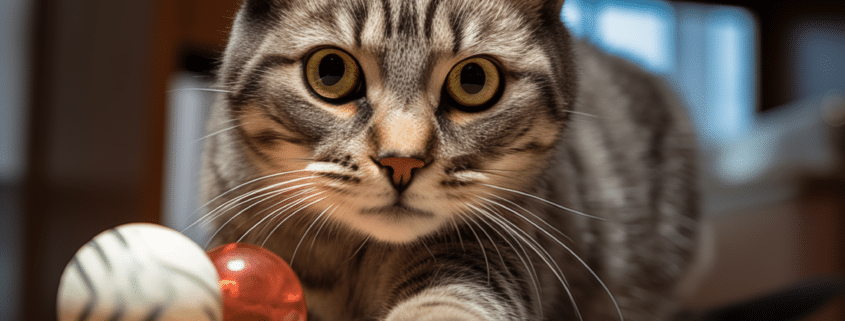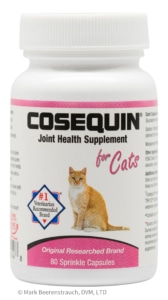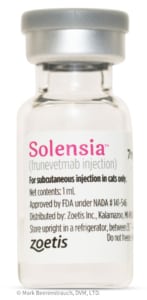A Comprehensive Guide to Treating Arthritis in Cats
Arthritis in cats is a complex condition characterized by joint inflammation, leading to pain and stiffness. The causes of arthritis in cats are multifaceted, including body conformation, excess weight, abnormal joint development, injury history, and previous surgeries. Osteoarthritis (OA) worsens over time, causing gradual joint deterioration. Inside their joints, cats have surfaces covered in smooth cartilage lubricated with fluid, enabling frictionless movement. However, arthritis occurs when this surface is damaged, and bone rubs together, causing pain and further cartilage damage. Cats aged ten and above often experience OA in at least one joint, making it a prevalent concern for senior feline friends.
Treatment Options for Arthritis in Cats
While a cure for arthritis remains elusive, its progression can be managed through a comprehensive and multi-modal treatment approach. Supportive therapy plays a crucial role, involving alleviating discomfort, minimizing further degenerative changes, and restoring joint functionality.
Nutrition
Weight management plays a pivotal role in the treatment of arthritis in cats. Excessive weight exacerbates stress on joints and muscles, contributing to pain and inflammation. By implementing a weight loss regimen, pet parents can alleviate strain on arthritic joints, improving mobility and overall comfort for their feline companions. An example prescription diet is Hills J/d specifically designed to support joint health in cats with arthritis. It contains a precise combination of essential fatty acids that reduce pain and inflammation in the joints and support cartilage health. Additionally, this diet helps manage weight, ensuring that cats maintain a healthy body condition, essential for overall joint function and mobility. By providing proper nutrition tailored to the needs of arthritic cats, pet parents can significantly improve their feline companion’s quality of life and comfort levels.
Dr. B Insight – If your cat is overweight, this must be a part of their treatment plan. Prescription weight-loss diets, automatic feeders, and an exercise plan can make a significant difference.
Chondroprotective Agents
Chondroprotective agents are an integral part of arthritis management in cats, aiming to support cartilage health and mitigate inflammation within the joints. These agents, including glucosamine/chondroitin sulfate and hyaluronic acid, work by potentially slowing cartilage breakdown and promoting cartilage synthesis. Omega-3 fatty acids, particularly those derived from marine sources like DHA and EPA, have also shown promise in reducing inflammation and managing cat arthritis symptoms. Incorporating these supplements into a cat’s daily diet can help maintain joint health and alleviate discomfort associated with osteoarthritis.
Exercise
Encouraging moderate, low-impact exercise in arthritic cats is essential for maintaining joint flexibility and muscle strength. Structured therapeutic exercises and interactive toys can engage cats in physical activity without placing excessive strain on their arthritic joints. Additionally, incorporating environmental enrichments like vertical climbing structures and puzzle feeders can promote mental stimulation and physical activity, contributing to overall well-being.
NSAIDs
NSAIDs are widely used in dogs and people but need to be used very cautiously in cats. A limited number of NSAIDs are licensed for use in cats and are approved for short administration over three days after surgery.
Dr. B Insight – Overall, these medications can have side effects in cats and should be avoided for long-term use.
Solensia
Solensia (frunevetmab) is an innovative treatment designed to alleviate cat osteoarthritis symptoms. As an anti-nerve growth factor (anti-NGF) monoclonal antibody, Solensia targets and inhibits the activity of nerve growth factor, which plays a significant role in pain signaling. Administered monthly as an injection, Solensia provides a novel therapeutic option for managing arthritis-related pain and discomfort in cats. Its targeted mechanism of action makes it a promising treatment for cats experiencing chronic pain due to osteoarthritis.
Dr. B Insight – This has been a game changer for cats, and I see this becoming our primary treatment option (besides weight management) due to the safety factor.
Other Analgesics
Other analgesic options, such as gabapentin, for example, are a medication that can help alleviate neuropathic pain and may be used in conjunction with other treatments to provide comprehensive pain relief. However, it’s essential to note that gabapentin can cause sedation in some cats, so careful monitoring of its effects is necessary.
Rehabilitation
Physical rehabilitation techniques from human medicine, such as therapeutic exercises, joint mobilization, and hydrotherapy, can be adapted for cats to improve mobility and joint function. Your Pet Health veterinarian can refer you to a rehabilitation specialist.
Integrative Care
Alternative therapies such as acupuncture, stem cell therapy, platelet-rich plasma, therapeutic laser, and CBD have shown some benefits, although further research is being done.
Dr. B Insight – At Pet Health, we consider laser therapy and acupuncture a component of our osteoarthritis treatment and have seen many pets benefit from them.
Surgery
Surgical options such as a femoral head osteotomy and arthrodesis of the carpus and tarsus could be beneficial in some instances.
Stay tuned for the rest of the month for more insights into treating cat arthritis, including specific products and expert advice from our veterinarians. Top of Form






